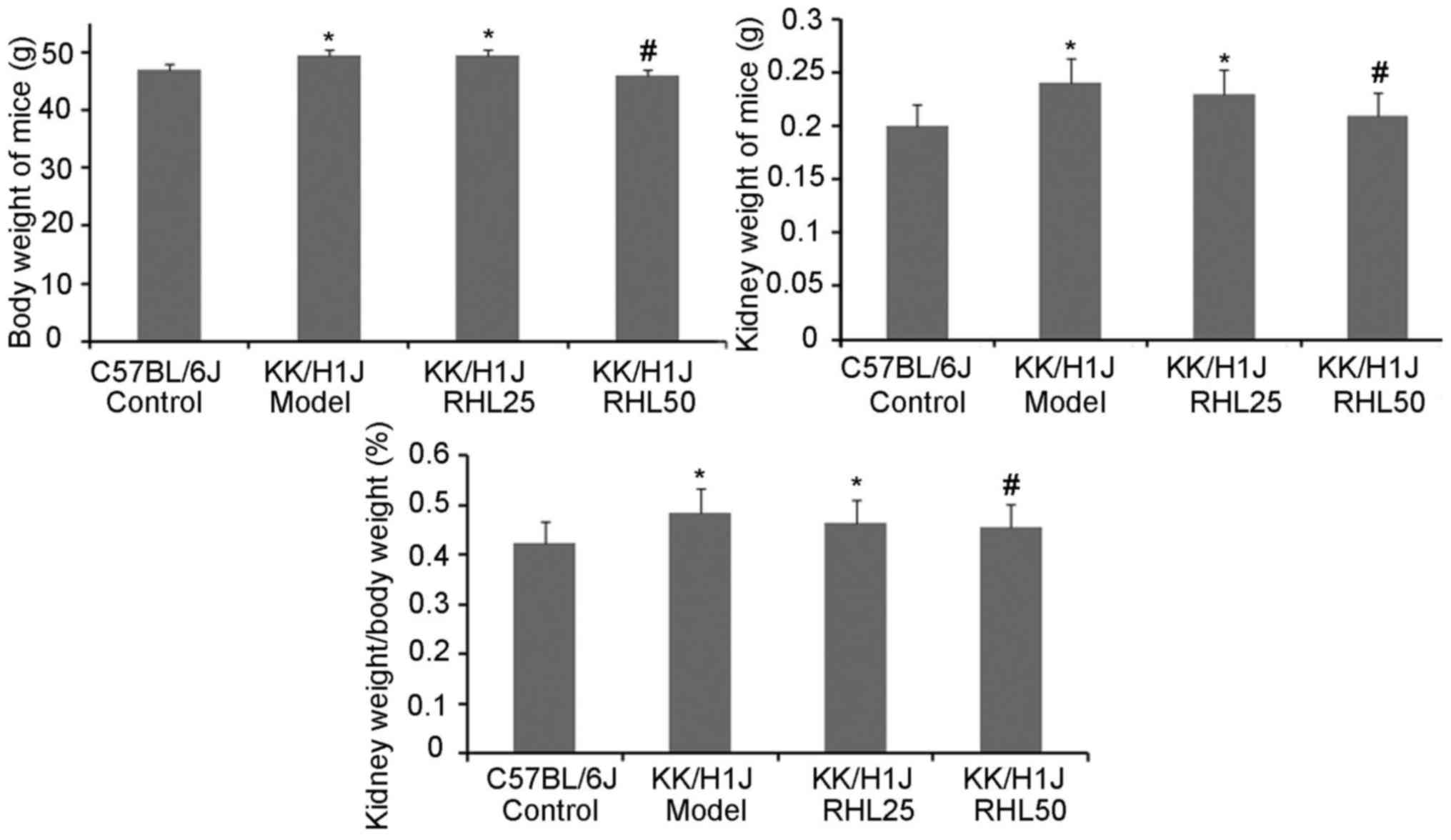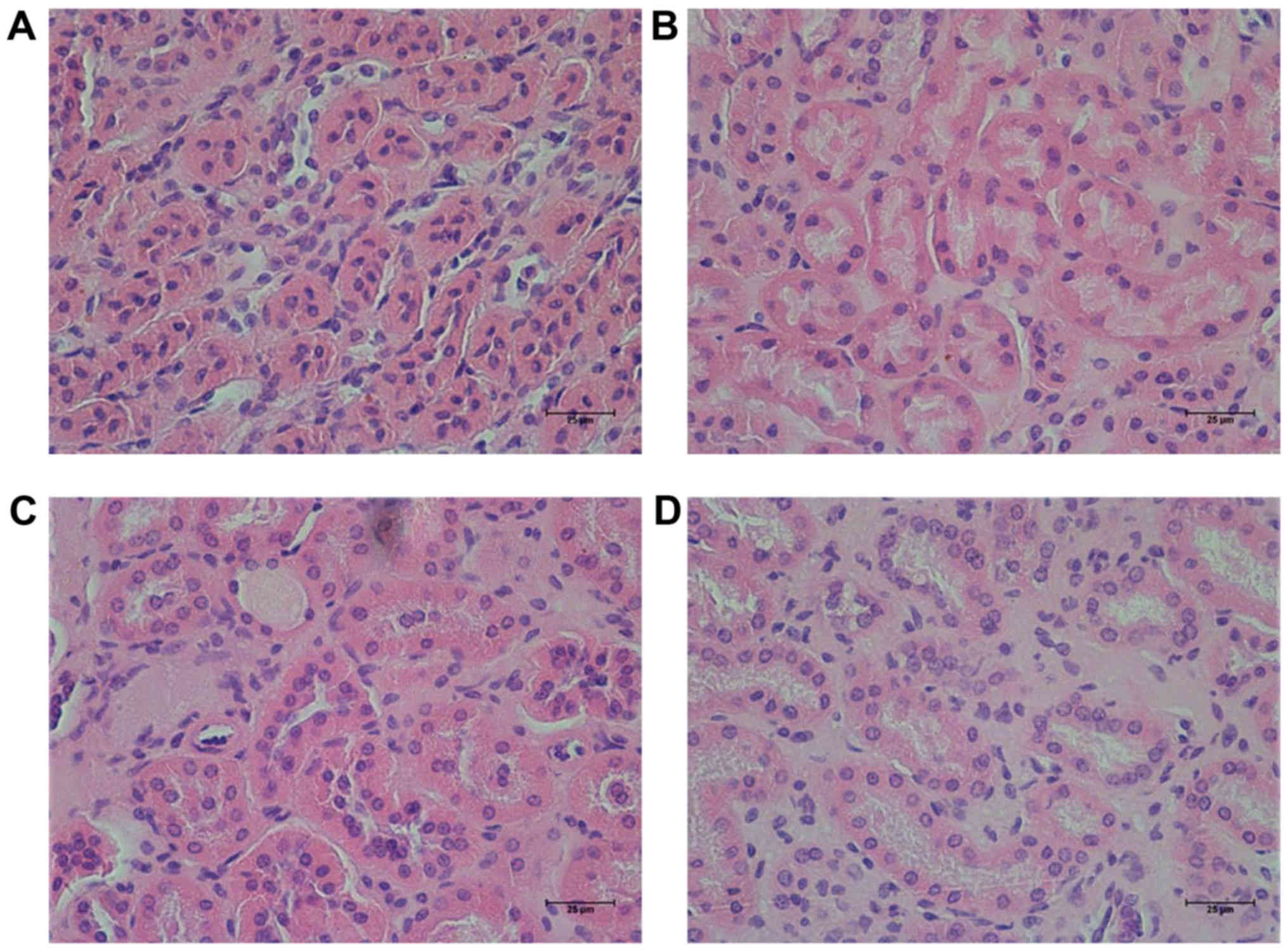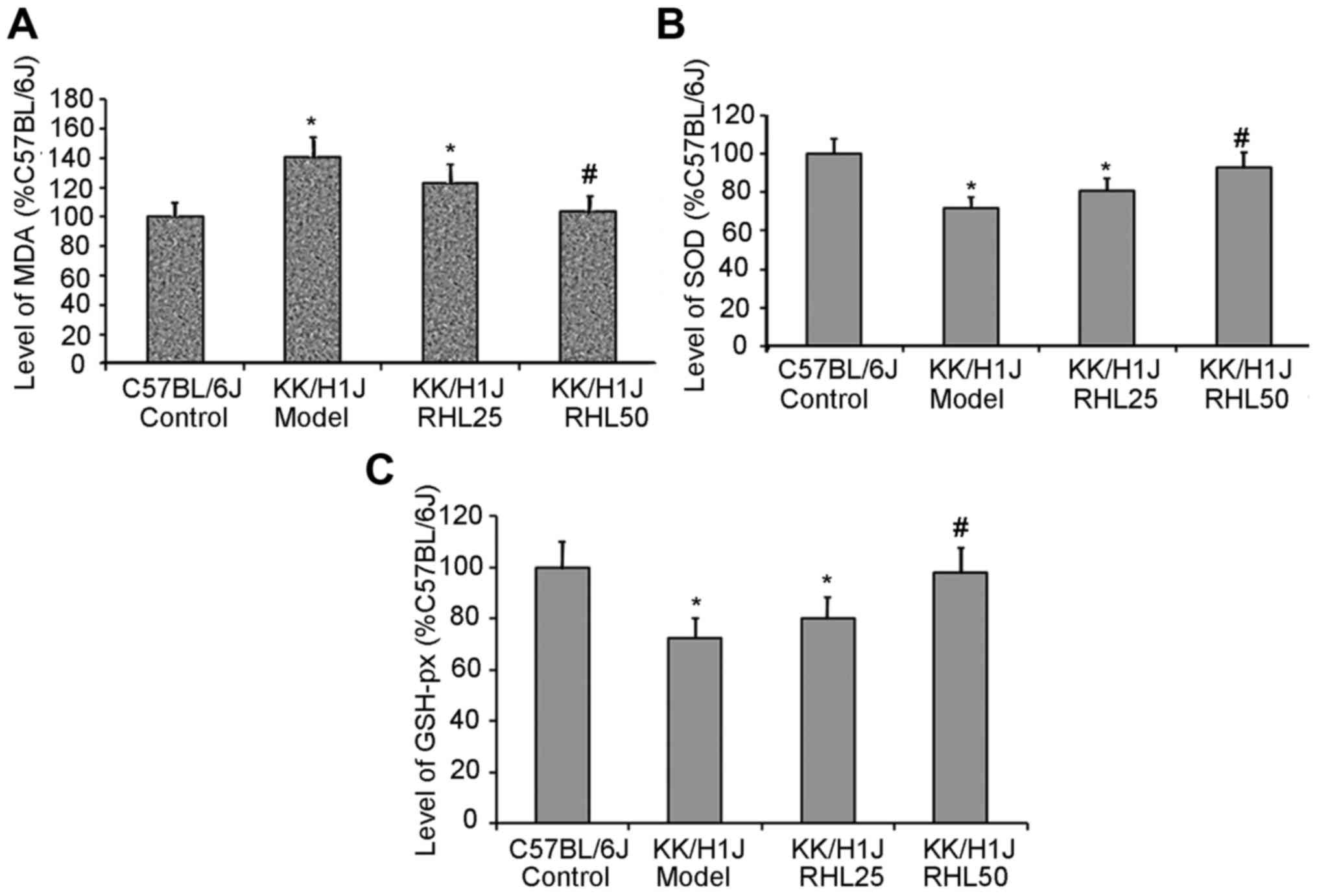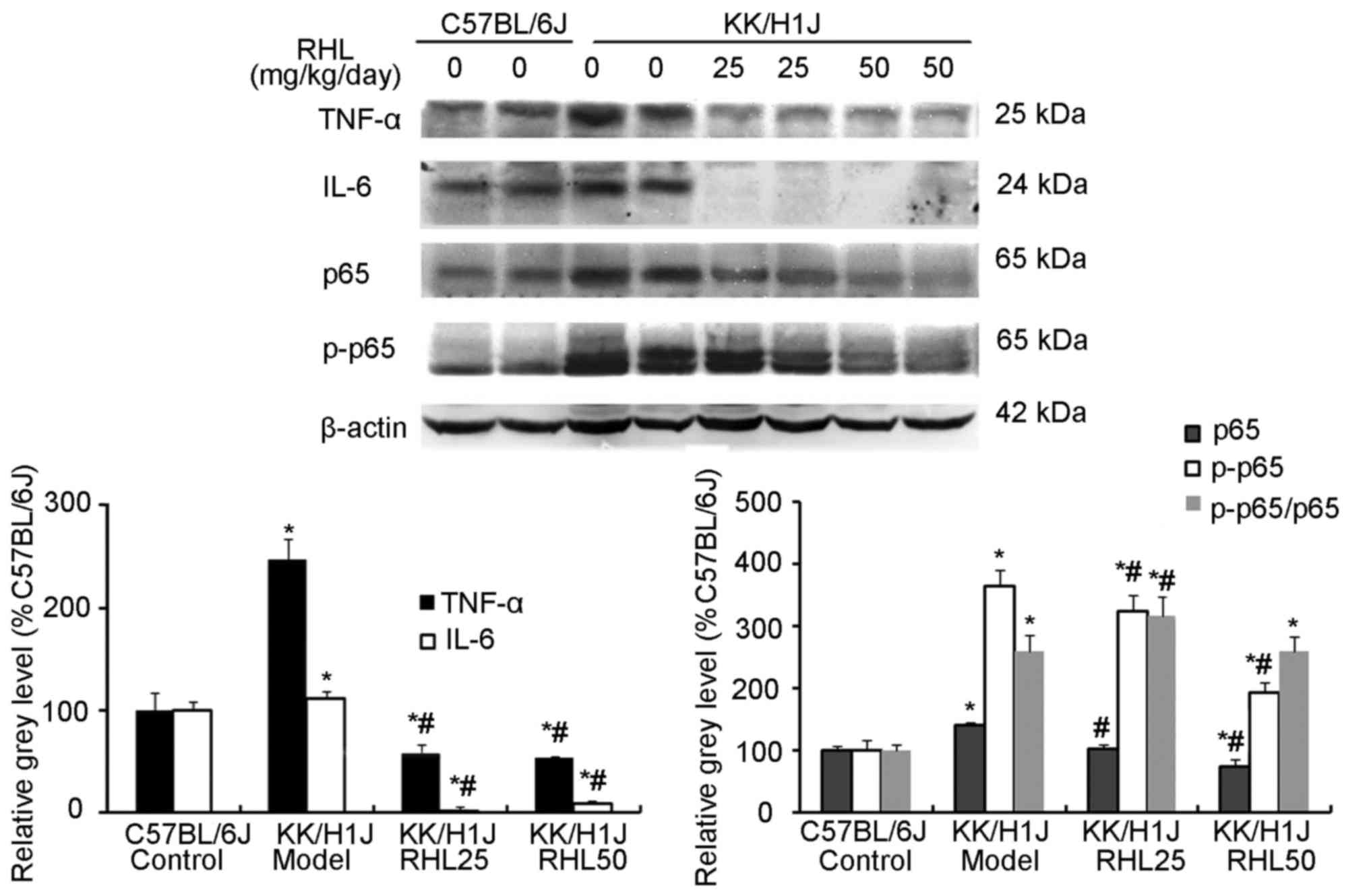|
1
|
Forouhi NG and Wareham NJ: Epidemiology of
diabetes. Medicine (Abingdon). 42:698–702. 2014.PubMed/NCBI
|
|
2
|
Harjutsalo V and Groop PH: Epidemiology
and risk factors for diabetic kidney disease. Adv Chronic Kidney
Dis. 21:260–266. 2014. View Article : Google Scholar : PubMed/NCBI
|
|
3
|
Noubiap JJ, Naidoo J and Kengne AP:
Diabetic nephropathy in Africa: A systematic review. World J
Diabetes. 6:759–773. 2015. View Article : Google Scholar : PubMed/NCBI
|
|
4
|
Assogba GF, Couchoud C, Roudier C, Pornet
C, Fosse S, Romon I, Druet C, Stengel B and Fagot-Campagna A:
Prevalence, screening and treatment of chronic kidney disease in
people with type 2 diabetes in France: The ENTRED surveysnd (2001
and 2007). Diabetes Metab. 38:558–566. 2012. View Article : Google Scholar : PubMed/NCBI
|
|
5
|
Bakris GL: Recognition, pathogenesis, and
treatment of different stages of nephropathy in patients with type
2 diabetes mellitus. Mayo Clin Proc. 86:444–456. 2011. View Article : Google Scholar : PubMed/NCBI
|
|
6
|
Thomas MC, Weekes AJ, Broadley OJ, Cooper
ME and Mathew TH: The burden of chronic kidney disease in
Australian patients with type 2 diabetes (the NEFRON study). Med J
Aust. 185:140–144. 2006.PubMed/NCBI
|
|
7
|
Chokhandre MK, Mahmoud MI, Hakami T, Jafer
M and Inamdar AS: Vitamin D & its analogues in type 2 diabetic
nephropathy: A systematic review. J Diabetes Metab Disord.
14:582015. View Article : Google Scholar : PubMed/NCBI
|
|
8
|
Liu J, Wang C, Liu F, Lu Y and Cheng J:
Metabonomics revealed xanthine oxidase-induced oxidative stress and
inflammation in the pathogenesis of diabetic nephropathy. Anal
Bioanal Chem. 407:2569–2579. 2015. View Article : Google Scholar : PubMed/NCBI
|
|
9
|
Mezzano S, Aros C, Droguett A, Burgos ME,
Ardiles L, Flores C, Schneider H, Ruiz-Ortega M and Egido J:
NF-kappaB activation and overexpression of regulated genes in human
diabetic nephropathy. Nephrol Dial Transplant. 19:2505–2512. 2004.
View Article : Google Scholar : PubMed/NCBI
|
|
10
|
Ayepola OR, Cerf ME, Brooks NL and
Oguntibeju OO: Kolaviron, a biflavonoid complex of Garcinia
kola seeds modulates apoptosis by suppressing oxidative stress
and inflammation in diabetes-induced nephrotoxic rats.
Phytomedicine. 21:1785–1793. 2014. View Article : Google Scholar : PubMed/NCBI
|
|
11
|
Soler MJ, Riera M and Batlle D: New
experimental models of diabetic nephropathy in mice models of type
2 diabetes: Efforts to replicate human nephropathy. Exp Diabetes
Res. 2012:6163132012. View Article : Google Scholar : PubMed/NCBI
|
|
12
|
Qi Z, Fujita H, Jin J, Davis LS, Wang Y,
Fogo AB and Breyer MD: Characterization of susceptibility of inbred
mouse strains to diabetic nephropathy. Diabetes. 54:2628–2637.
2005. View Article : Google Scholar : PubMed/NCBI
|
|
13
|
Lin YJ and Zhen YS: Rhein lysinate
suppresses the growth of breast cancer cells and potentiates the
inhibitory effect of taxol in athymic mice. Anticancer Drugs.
20:65–72. 2009. View Article : Google Scholar : PubMed/NCBI
|
|
14
|
Hu G, Liu J, Zhen YZ, Xu R, Qiao Y, Wei J,
Tu P and Lin YJ: Rhein lysinate increases the median survival time
of SAMP10 mice: Protective role in the kidney. Acta Pharmacol Sin.
34:515–521. 2013. View Article : Google Scholar : PubMed/NCBI
|
|
15
|
Meng Z, Yan Y, Tang Z, Guo C, Li N, Huang
W, Ding G, Wang Z, Xiao W and Yang Z: Anti-hyperuricemic and
nephroprotective effects of rhein in hyperuricemic mice. Planta
Med. 81:279–285. 2015. View Article : Google Scholar : PubMed/NCBI
|
|
16
|
Lin YJ, Hu G, Li KJ, Zhao YF, Wei J and
Zhen YZ: The protection of Rhein lysinate to liver in diabetic mice
induced by high-fat diet and streptozotocin. Arch Pharm Res.
38:885–892. 2015. View Article : Google Scholar : PubMed/NCBI
|
|
17
|
Cao Z and Cooper ME: Pathogenesis of
diabetic nephropathy. J Diabetes Investig. 2:243–247. 2011.
View Article : Google Scholar : PubMed/NCBI
|
|
18
|
Dronavalli S, Duka I and Bakris GL: The
pathogenesis of diabetic nephropathy. Nat Clin Pract Endocrinol
Metab. 4:444–452. 2008. View Article : Google Scholar : PubMed/NCBI
|
|
19
|
Furukawa M, Gohda T, Tanimoto M and Tomino
Y: Pathogenesis and novel treatment from the mouse model of type 2
diabetic nephropathy. ScientificWorldJournal. 2013:9281972013.
View Article : Google Scholar : PubMed/NCBI
|
|
20
|
Dobretsov M, Romanovsky D and Stimers JR:
Early diabetic neuropathy: Triggers and mechanisms. World J
Gastroenterol. 13:175–191. 2007. View Article : Google Scholar : PubMed/NCBI
|
|
21
|
Wattanathorn J, Thiraphatthanavong P,
Muchimapura S, Thukhammee W, Lertrat K and Suriharn B: The combined
extract of Zingiber officinale and Zea mays (purple
color) improves neuropathy, oxidative stress, and axon density in
streptozotocin induced diabetic rats. Evid Based Complement
Alternat Med. 2015:3010292015. View Article : Google Scholar : PubMed/NCBI
|
|
22
|
Meng H, Zhang D and Yang H: Effects of
amyloid precursor protein 17 peptide on the protection of diabetic
encephalopathy and improvement of glycol metabolism in the diabetic
rat. J Diabetes Res. 2013:6898412013. View Article : Google Scholar : PubMed/NCBI
|
|
23
|
Yang XW, Liu FQ, Guo JJ, Yao WJ, Li QQ,
Liu TH and Xu LP: Antioxidation and anti-inflammatory activity of
Tang Bi Kang in rats with diabetic peripheral neuropathy. BMC
Complement Altern Med. 15:662015. View Article : Google Scholar : PubMed/NCBI
|
|
24
|
Al-Rejaie SS, Aleisa AM, Abuohashish HM,
Parmar MY, Ola MS, Al-Hosaini AA and Ahmed MM: Naringenin
neutralises oxidative stress and nerve growth factor discrepancy in
experimental diabetic neuropathy. Neurol Res. 37:924–933. 2015.
View Article : Google Scholar : PubMed/NCBI
|
|
25
|
Semeraro F, Cancarini A, Dell'Omo R,
Rezzola S, Romano MR and Costagliola C: Diabetic retinopathy:
Vascular and inflammatory disease. J Diabetes Res. 2015:5820602015.
View Article : Google Scholar : PubMed/NCBI
|
|
26
|
Wu JS, Liu Y, Shi R, Lu X, Ma YM and Cheng
NN: Effects of combinations of Xiexin decoction constituents on
diabetic nephropathy in rats. J Ethnopharmacol. 157:126–133. 2014.
View Article : Google Scholar : PubMed/NCBI
|
|
27
|
Akram KA, Tofighiyan T and Rakhshani MH:
Effects of synbiotics on inflammatory markers in patients with type
2 diabetes mellitus. Glob J Health Sci. 7:(7 Spec No). 1–5.
2015.
|
|
28
|
Nolasco EL, Zanoni FL, Nunes FP, Ferreira
SS, Freitas LA, Silva MC and Martins JO: Insulin modulates liver
function in a type I diabetes rat model. Cell Physiol Biochem.
36:1467–1479. 2015. View Article : Google Scholar : PubMed/NCBI
|
|
29
|
Peng Y and Li LJ: TNF-α-308G/A
polymorphism associated with TNF-α protein expression in patients
with diabetic nephropathy. Int J Clin Exp Pathol. 8:3127–3131.
2015.PubMed/NCBI
|
|
30
|
Wang SS, Purdue MP, Cerhan JR, Zheng T,
Menashe I, Armstrong BK, Lan Q, Hartge P, Kricker A, Zhang Y, et
al: Common gene variants in the tumor necrosis factor (TNF) and TNF
receptor superfamilies and NF-kB transcription factors and
non-Hodgkin lymphoma risk. PLoS One. 4:e53602009. View Article : Google Scholar : PubMed/NCBI
|
|
31
|
Xie X, Chang X, Chen L, Huang K, Huang J,
Wang S, Shen X, Liu P and Huang H: Berberine ameliorates
experimental diabetes-induced renal inflammation and fibronectin by
inhibiting the activation of RhoA/ROCK signaling. Mol Cell
Endocrinol. 381:56–65. 2013. View Article : Google Scholar : PubMed/NCBI
|














